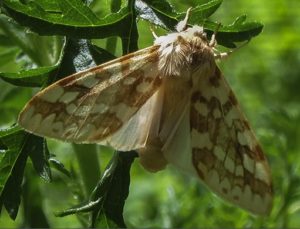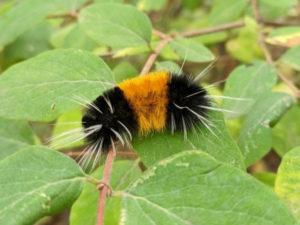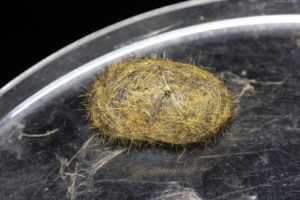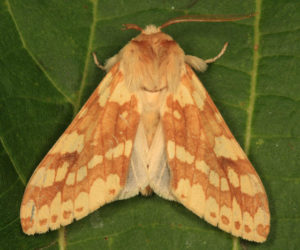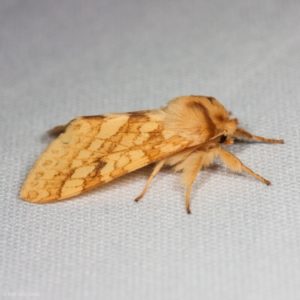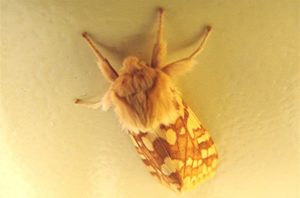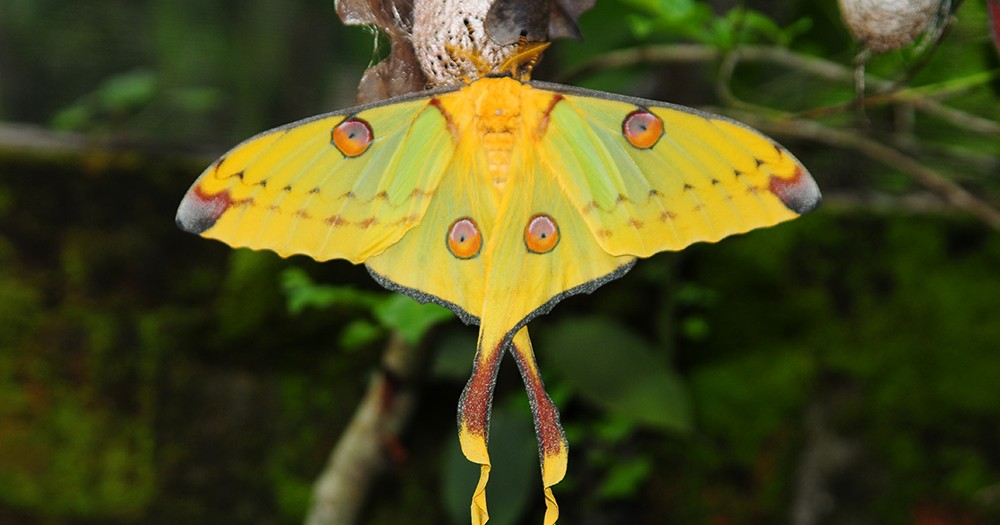Spotted Tussock Moth (Lophocampa maculate)
Spotted tussock moth of the Erebidae family has a wide range, indigenous to Canada, western United States, down south up to the Appalachians, and parts of Kentucky and South Carolina. Though belonging to the tiger moth tribe, it is commonly called tussock because of the hair tufts appearing on the caterpillar’s back. The spotted pattern seen on the adult moth’s wings earns them their name.
adirondackvic.org
Scientific Classification
- Family: Erebidae
- Genus: Lophocampa
- Scientific Name: Lophocampa maculate
Description and Identification
Caterpillar
The caterpillar has a hairy appearance, with the larval stage divided into five instars. A completely matured larva has an orange or yellow coloration in the middle and black at both ends. Some species may also have black spots marked against the orange or yellow body. They grow to a length of about 4 cm (1.57 inches) on average.
Though not harmful or a pest to the environment, the larvae could result in allergic reactions when touched as they have urticating hairs.
Adult Moth
Sexual Dimorphism: Present but not prominent
Color and Appearance
Forewings: When opened, they are deep yellow, marked with yellow spots and four brown bands, which mostly appear merged. When closed, the color and pattern remain the same, with the spots not visible.
Hindwings: When opened, the hindwings are yellow and pale yellow without any spots. When closed, the hindwings are barely visible.
Average Wingspan: 3.5 – 4.5 cm
Flight Pattern: Consistent
Season: May – July
Quick Facts
| Other Names | Spotted halisidota, mottled tiger |
| Distribution | Different parts of North America, extending up to southern Canada, and far across western and southeastern United States, covering portions of Kentucky, and South Carolina |
| Habitat | Deciduous forests |
| Predators | Not recorded |
| Lifespan of Adults | Not recorded |
| Host Plants | Birch, oak, maple, willow, poplar |
| Adult Diet | Nectar of host plants |
Did You Know
- American botanist and entomologist described the spotted tussock moth in 1841.
- These moths have three subspecies: Lophocampa maculata maculate, Lophocampa maculata agassizii, and Lophocampa maculata texana.
Scientific Classification
- Family: Erebidae
- Genus: Lophocampa
- Scientific Name: Lophocampa maculate

